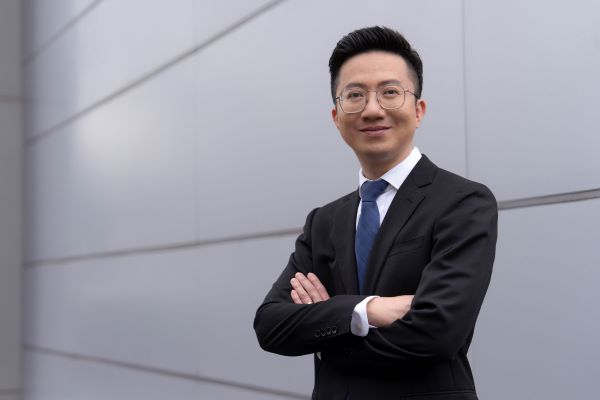
By Alvin Lee
SMU Office of Research – When Professor Li Jia was appointed as the Dean of the SMU School of Economics (SOE) on July 1, 2024, the first thing he did was to set up several rounds of research roundtables with SOE faculty members to set the research agenda and direction.
“The theme of the roundtables was: ‘How to incorporate AI into quantitative economic research’ and, more generally, incorporating AI into social science research,” Professor Li tells the Office of Research. “AI tools can be very helpful for solving complicated economic models, including the models for international trade.
“Given our strength in econometrics and international trade, we are in a unique position to contribute to the development of computationally intensive econometric and international trade models.”
Econometrics and international trade are two key pillars of research excellence at SOE, the Dean points out. Publishing in top economics journals and gaining citations will naturally be a key goal for Professor Li and the School, but delivering societal impact is also a prime objective. AI will play a critical role in SOE achieving those goals, he says.
“Econometrics is closely related to data science, AI, and machine learning tools,” observes the Dean. “It is an exciting time for econometricians. With the new technology, we could reinvent ourselves to contribute to, and benefit from, this AI trend.”
Understanding the AI black box
Professor Li cited time series analysis, which is used for things such as GDP forecasting, as an example of traditional econometrics where the only input or data is numbers. Pre-AI econometrics also involved relatively primitive textual analysis that counted keywords, where the occurrences of certain words in newspapers were tallied up to gauge economic sentiment. For example, ‘volatility’ or ‘uncertainty’ might be classified as indicators of ‘bad’ economic sentiment while ‘expansion’ or ‘investing’ would suggest ‘good’ economic sentiment.
With the ready availability of Large Language Model (LLM) tools such as ChatGPT and now DeepSeek, econometricians have more tools than ever to build economic models to predict real world behaviour. However, the real value involves understanding how these tools work.
“If you think about ChatGPT or a deep neural network, it’s a tool, basically it's a function or a black box,” explains Professor Li. “The input of the function is data, and the output can be considered as processed information. The original data is big and complex, but processed information is usable for purposes such as measuring sentiment.
“As econometricians, our job is to provide tools for economists to do empirical research. We create an interface between theory (economic models) with the real world (data). For econometricians, our job is to understand better: What is the function actually doing? When does it do well, or not so well? It's important to devote more resources and understand its theoretical properties.”
He adds: “From a downstream point of view, you have this new tool which you could use to do empirical work. But there can be another upstream point of view where you can look at the new tool, and you want to understand fundamentally why this new tool is better at all in terms of theory.
“We have both kinds of faculty in SOE. Some are focused on understanding the deeper theory, while others look at how to use the new tool to achieve a more practical, more economic, empirically driven course.”
Modelling for the “unknown unknowns” in international trade
SOE’s other research pillar, international trade, has taken on extra importance since the return of Donald Trump to the White House. The former and current US president’s slapdash tariffs on China, Canada, and Mexico have triggered substantial uncertainty, which will likely be worsened if similar actions were taken on the European Union (EU).
While the 10-percent tariff on China was widely expected given Trump’s previous stint as the president, the moves on Canada and Mexico caught many off guard.
“It is quite surprising that the US is doing this to Canada, which is an ally and neighbour. Canada and Mexico are the largest two trading partners with the US,” Professor Li explains. “What is going to happen next? Will tariffs also be imposed on Europe? What about Singapore? When we talk about policy uncertainty, this is uncertainty. We are in new territory.”
Most economic models are probabilistic models determining the likelihood of any given event happening. These events are described as ‘known unknowns’, i.e., US will levy tariffs on Chinese products, but it’s unknown which ones it will do so and by how much. Because of the rarity and lack of precedence of a leading power levying tariffs on its closest allies and partners, it is something of an ‘unknown unknown’, and thus difficult to build a probabilistic model to assess the economic repercussions.
“I do not even know how to quantify the probability of something happening or not because there's no historical data from which I can form a probabilistic distribution to gauge to what extent one thing or the other is going to happen,” the Dean concedes. “From either a policy point of view or academic point of view, this is going to motivate a lot of research: If a big country is doing this, should we rethink how we model international trade?
“I think this is going to be bad for the global economy overall. But this is also an exciting time for academic research because it creates these kinds of big, unexpected shocks for us to test our existing models. If the models take the shocks as an input and predicts accurately what is going to happen in the next few years, it suggests that the trade models are actually quite good as a basis on which to design economic models. If the model fails, it just creates a chance for us to revise and to design better models.
“Either way, this is an exciting time for research on international trade.”
Back to Research@SMU February 2025 Issue
See More News
Want to see more of SMU Research?
Sign up for Research@SMU e-newslettter to know more about our research and research-related events!
If you would like to remove yourself from all our mailing list, please visit https://eservices.smu.edu.sg/internet/DNC/Default.aspx

